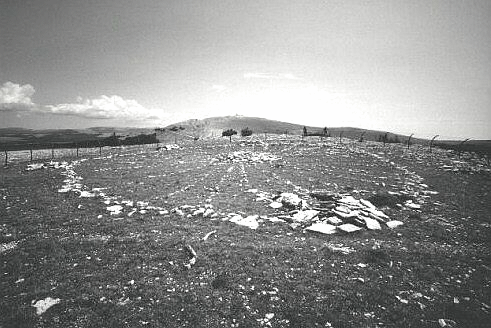Medicine Wheels
These sites seem to have been created with spiritual, ceremonial, and astronomical significance. Some sites are ancient, having been dated as more than 4,500 years old. Medicine wheels are located primarily in South Dakota, Wyoming, Montana, Alberta, and Saskatchewan. The greatest majority are in Alberta, Canada. More than 70 medicine wheels have been found so far. The most famous medicine wheel is in the Bighorn National Forest in Big Horn County, Wyoming at an elevation of 9,642 feet. The Bighorn Medicine Wheel has 28 spokes that extend out from a central cairn. It is 75 feet in diameter and has smaller stone cairns on the cirumference. There is a lot of variation in the construction of the wheels. For instance there is no set number of spokes. Some wheels have one spoke that is longer than the rest, with apparent astronomical significance in the direction it points. With some wheels the spokes start from the center cairn and go just to the outer ring, but with some they go out past the outer ring. Some wheels have spokes that start at the outer ring and radiate out from there. In 1977 an astronomer named John Eddy from the High Altitude Observatory, National Center for Atmospheric Research in Boulder, Colorado proposed that some of the wheels had astronomical alignments. Dr. Eddy suggested that some wheels had spokes pointing to certain stars at certain times of the year, and otherwise marked specific days of the year like the solstices. The importance of the solstices and equinoxes to ancient people is well accepted but the total extent of astronomical influence on the construction of medicine wheels remains a matter of debate. This is because the huge number of celestial objects and events makes coincidental alignments probable. A rough definition of what constitutes "alignment" increases the likelyhood of coincidence. In general, the builder's intent may represent a combination of the celestial and the worldly. Some tribal elders today say that the structures were always intended to tie the sky and the earth together.  Photographs © Steve Dutch, Natural and Applied Sciences, University of Wisconsin - Green Bay |
